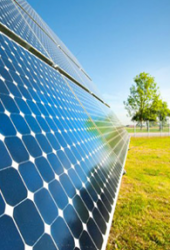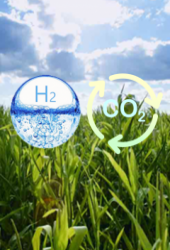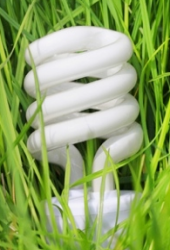Detail:
- ABSTRACT
The objective of this study was to evaluate the restricted zones of nuclear power plants at the potential sites of Thailand’s future nuclear power plant constructions. The regulations of U.S. Nuclear Regulatory Commission (U.S. NRC) were adopted for the evaluation of Exclusion Area Boundary (EAB) and Low Population Zone (LPZ). Calculations were based on Design Control Documents (DCD) and the plume dispersion computer code Hotspot, which implemented the Gaussian plume model in analyzing the Total Effective Dose Equivalent (TEDE). The TEDE at the EAB and LPZ distances must not exceed 25 Rem (0.25 Sv) within 2 hours and 30 days of radioactive plume passing by, respectively from reactors approved by the U.S. NRC, where analyzed for worse case that input parameters resulting in severe impacts. Results revealed that EAB of AP1000 and US-APWR are 1,300 and 850 meters respectively when TEDE not exceed 25 Rem whereas U.S.EPR and ESBWR are only 910 and 700 meters respectively when TEDE not exceed 12 Rem. LPZ of AP1000, US-APWR, U.S.EPR and ESBWR are 2,200, 2,700, 3,200 and 4,500 meters respectively when TEDE not exceed 25 Rem. So Surat Thani site passed every aspect of U.S. NRC’s regulations related to EAB and LPZ evaluations, not having any population center exceeding 25,000 people for the life of the nuclear power stations, based on estimation of population numbers up to 60 years starting from B.E. 2554.
KEYWORDS : Exclusion Area Boundary, Low Population Zone, Nuclear Power Plant - ABSTRACT
This Thesis to present the factors that affects the attitude and preferences of users and enthusiasts towards hybrid electric vehicles. Moreover, this study discusses the public’s satisfaction with the current policies supporting the use of hybrid electric vehicles, as well as, their suggestions for necessary improvement on government policies in line with its usage. The samples used in this study are real users who are interested in hybrid electric vehicles. Total of 400 samples, but only 382 were present only for those interested. The behavioral characteristics of the public towards hybrid electric vehicles. The influential factors of marketing mix and environmental effect. The importance of policies and its value to decision-making. Problems encountered and useful suggestions to make the attitude and preferences of the public towards hybrid electric vehicles. Study showed that majority of car owners and enthusiasts are considering the reliability of car manufacturers as a priority factor followed by safety and assurance, and current and projected cost of energy. Services such as after-sales and promotions are lightly considered too. If these factors are developed and matched properly, more consumers will pursue in buying hybrid electric vehicles.
KEYWORDS : Hybrid Electric Vehicles, Attitudes and Satisfaction, Principles of Marketing, Energy Policy. - ABSTRACT
This research studied the performance of flat-plate photovoltaic/thermal system. The thermal side is a sheet and tube type using water to transfer heat. The panel area was 0.79 m2 and connected to the insulated tank which stored 120 litres of water. The test divided in two cases, the small-size circulating pump was used in the first case and the natural circulating in the second case. The panel system was installed on the roof deck of a 5-storey building in Chulalongkorn University at coordinate 13o 44’ 8” N. The panel was set at the angle of 15 degrees to the horizontal plane and facing the south direction. The important parameters that affect the system are solar intensity, initial water temperature, inlet water temperature and ambient temperature. The data were collected during 8.00 AM – 4.00 PM in two minutes interval and convert the data into hourly and daily basis.
The daily data were used to calculate thermal efficiency and electrical efficiency. The thermal efficiency equation was obtain as η_th= 0.25 -0.06 ((T_i-T_a))/H which T_i is initial water temperature in tank (oC), T_a is mean ambient temperature (oC) and H is mean solar energy on the panel in a period of time. The maximum thermal efficiency was 25 %. The electrical efficiency was also obtain as η_el= 0.03 – 0.01 ((T_i-T_a))/H. The maximum electrical efficiency was 3 % and maximum total system efficiency was 28 %. The yearly energy that received from the system was calculated base on the solar intensity and ambient temperature data of Thai Meteorology Department at Bangkok station during December, 2010 to November, 2011. The result showed that the thermal energy and the electrical efficiency were 1,023 MJ and 127 MJ per year, respectively.
KEYWORDS : Performance, Efficiency, Flat Plate PVT - Abstract
This paper presents the experimental results to confirm the feasibility and energy saving in small ladle preheating by employing electric heater in place of diesel oil burner. The ladle in this study has a capacity of 1 ton molten steel. The burner has a firing rate of 10 liters of diesel oil per hour. The electric heater is made of Nickel – Chromium equivalent with working temperature in the range of application. The heating power of the heater is 30 kW.
The results show that electric heater preheating is satisfactory. The efficiencies of ladle preheating with diesel oil burner and electric heater are 22% and 39% respectively. Moreover in electric heater preheating, working environment is significantly cleaner and cooler, compared with burner preheating.
Keyword : Energy Conservation, Ladle Preheating, Electric Heater - Abstract
Nowadays energy and environmental crisis are a major concern for all parts of society. One of the solutions to solve this crisis is to use energy efficiently, especially by using a waste heat recovery system. Most office buildings use chillers for cooling whereas the waste heat is obtained as a by-product which can be used in the recovery system to generate hot water.
This paper is the study of the improvement of energy efficient usage by using the waste heat recovery system on the chiller used for an air-conditioning unit with heat pump to generate hot water. This will be performed by collecting data from the experiment conducted by varying the water flow rate as the effect on hot water production. In addition, these results can be applied to other office buildings as a guideline for a preliminary study and design before introducing an actual implementation to reduce energy consumption of the hot water generating system.
The results show that the temperature of produced hot water depends on the water flow rate. When the water flow rate decreases, temperature of hot water and power of heat pump compressor increase. On the other hand, the hot water temperature and power consumptions of heat pump compressor decrease, when the water flow rate is increased. The coefficient of performance (COP) of the chiller with the waste heat recovery system is approximately 3.60 and the coefficient of performance (COP) of the heat pump increased from 5.01 to 6.39, 6.77, 7.21, 7.56 and 7.66 (27.5%, 35.1%, 43.9%, 50.9% and 52.9%) at water flow rate of 4, 6, 8, 10, 10 and 15.5 liters per minute respectively.
Keyword : chiller, heat pump, hot water, waste heat recovery - Abstract
This research developed the potassium zinc composite on mesoporous silica heterogeneous catalyst for transesterification reaction of soybean oil and methanol. The potassium and zinc composite supported on mesoporous silica were prepared by the sequential wetness impregnation of zinc nitrate and potassium iodide solution, followed by calcinations at 450˚C for 6 h and 600˚C for 3 h for zinc and potassium, respectively. The catalysts were characterized the physical properties by X-ray Diffraction (XRD) and N2 Absorption-Desorption Analysis. The catalytic activity in transesterification was investigated by variation of three parameters : zinc amount, catalyst loading, and reaction time. The optimized condition to obtain the highest conversion was considered. The highest catalytic activity was obtained with mesoporous silica loaded with zinc 0.5% and potassium 15% When the transesterification reaction was carried out at catalyst amount of 15เปอร์เซ็นต์wt and reaction time of 10 h, the conversion of soybean oil was 96%
Keywords :Biodiesel, Transesterification reaction, Potassium Zinc composite catalyst
Volume : 9 Issue : 2 Year : 2012





